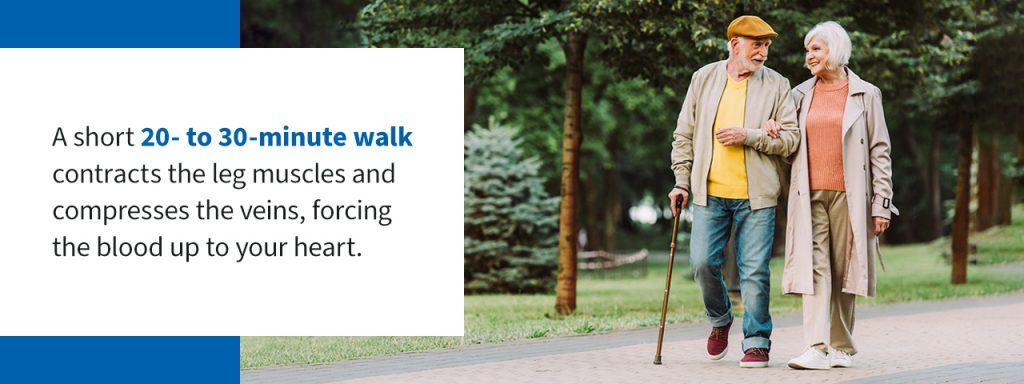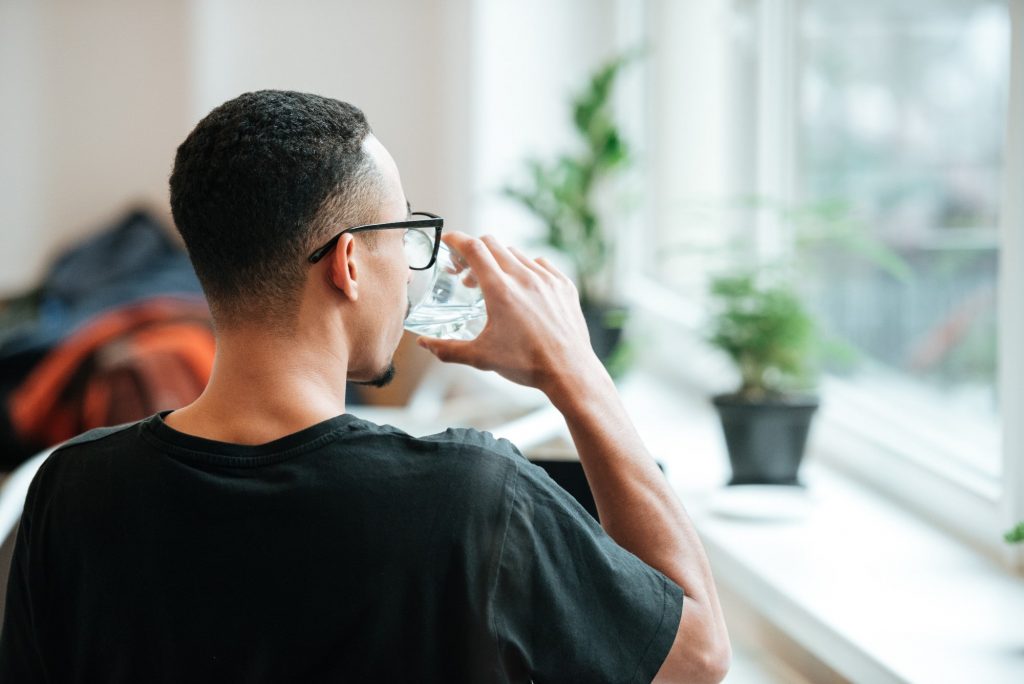
We hear it everywhere: circulation is important, both for your veins and your overall health. But how can we work to improve it? Is improving and maintaining your circulation as daunting as it sounds? You’ll be happy to know that improving your circulation isn’t difficult at all. In fact, there are many small, everyday tweaks you can make to your daily lifestyle that will improve your overall circulation and vein health.
Risk Factors, Complications, Warning Signs
Symptoms – Bleeding, Itching, Skin Issues, Bulging, Clots & Ulcers
Our circulatory system is important; it’s what keeps our blood, oxygen, and nutrients circulating properly throughout our body. When something prevents our blood from flowing properly, we may experience a familiar pins-and-needles tingling in the area of poor circulation. We may also experience numbness, pain, or muscle cramps in the affected area. These feelings are most common in your arms and legs.
Arterial circulation involves arteries, which carry blood away from the heart.
Venous circulation completes the circuit, consisting of the veins and sinuses. If veins do not function properly, there is a build-up of pressure on the vein side leading to swelling and varicose veins.
One frequent contender is our veins. Our veins have valves responsible for pushing blood through our body. This is harder in the lower leg where blood must be pushed against the flow of gravity. If valves are weakened or damaged, blood can pool in the veins. Varicose veins can form as a result of poor circulation in the lower leg.
Over time, the lack of circulation can lead to other health concerns such as blood clots, which can potentially dislodge from the vein and move to the lungs. This is why it’s important to take steps to boost your circulation where possible.
Giving your circulatory system a boost is easy. Here are a few simple ways to keep your circulatory system healthy:
 Exercise
ExerciseExercise is one of the most common tips you may hear for improving circulation, and that’s for a good reason! While exercise does benefit our overall health, it has a particularly significant impact on circulation. Many exercises engage calf muscles, which can reduce the amount of pressure put on the veins. If you don’t have time to carve out an entire exercise routine, don’t worry. Low-impact exercises like walking and swimming are great! Even a 15-minute daily walk can make a difference.
Yoga can also be a beneficial, relaxing exercise to introduce into your schedule. Some poses help decompress the veins and drain blood that’s pooled in the leg. Try lying on your back and lifting your legs up at a 90-degree angle — you can rest them on a wall to make it easy. Take a deep breath and let yourself relax. Breathing increases vein flow: decreases intrathoracic pressure and draws vein flow from the pelvis and legs.
Swimming pool therapy, especially in hot weather:
If you’re a smoker who’s considered quitting, here’s yet another reason to put down the cigarettes for good. Smoking, including second-hand smoke, causes inflammation in your lower leg and increases your risk of blood clots. This is especially troublesome if you already have poor vein health. We can blame nicotine for this one since it damages vein cells and allows fats and plaque to find a new home in vein walls.
Do you work as a cashier or in an office? It may be putting excess stress on your circulation. There’s no need to switch jobs, but you will want to be cautious of sitting or standing for too long. Fit in small walks where you can help get the blood in your legs flowing again. And if your job involves standing with no opportunity to move around, try incorporating a few heel raises throughout the day to get your calf muscles working.
Tired after a long day? Take a few minutes to kick your feet up (literally) and relax. When you elevate your legs, your vein valves don’t have to fight against gravity to circulate blood back to the heart. As a result, this can relieve any pain or pressure you may feel in the lower legs at the end of the day.
Are you a frequent traveler? Keep in mind the impact this can have on your vein health. Sitting for a long flight may seem like a time to kick back for a nap, or you may want to minimize breaks on a long car ride to get there faster. But the amount of stress this puts on your veins isn’t worth it. If you can, take frequent stops to stretch and move around. And if standing isn’t an option, try flexing your ankles to help blood circulate in the leg.
Excess weight leads to excess pressure on your legs, and that pressure can result in strained circulation. Managing your weight can relieve a lot of that pressure on your veins and lower your risk of future vein problems. If you have concerns about your weight, talk to a doctor to see what your best next steps are.
It’s time to break out the broccoli! Fiber-filled foods are proven to protect veins and improve circulation. And you don’t need to settle for a daily salad — vegetables can be incorporated into many tasty dishes. If you’re searching for high-fiber greens, opt for split peas, lima beans, artichokes, broccoli, or avocados. Other fiber-friendly foods include raspberries, oatmeal, pears, lentils, and black beans.

Our blood is thinner when we’re hydrated, which makes it easier to move through the veins.
Like walking, stretching can give you a circulation boost that is especially important if you sit or stand for hours at a time.
Compression socks strategically apply pressure to the leg to help your veins circulate blood properly. If you already have damaged veins, or if you spend most of your day sitting or standing, compression stockings may help remove some of the pressure. Make sure to talk to a specialist before picking up a pair. Compression stockings are not one-size-fits-all, and you want to make sure you’re using the level of compression that will offer the best benefit for your vein health.
Improving your circulation can help lower your risk of developing varicose veins. However, other factors — like genetics, age, and hormones — can still impact your veins. But there’s no need to worry. The vein specialists in Orlando at Central Florida Vein & Vascular Center have dedicated themselves to offering the best vein care possible. They’re available to answer your questions, check out your vein health, and curate the treatment plan that’s right for you. If you currently have concerns about your veins, why not stop by? You can schedule a consultation with one of our specialists today by calling 407-545-3385 or 352-658-5547.